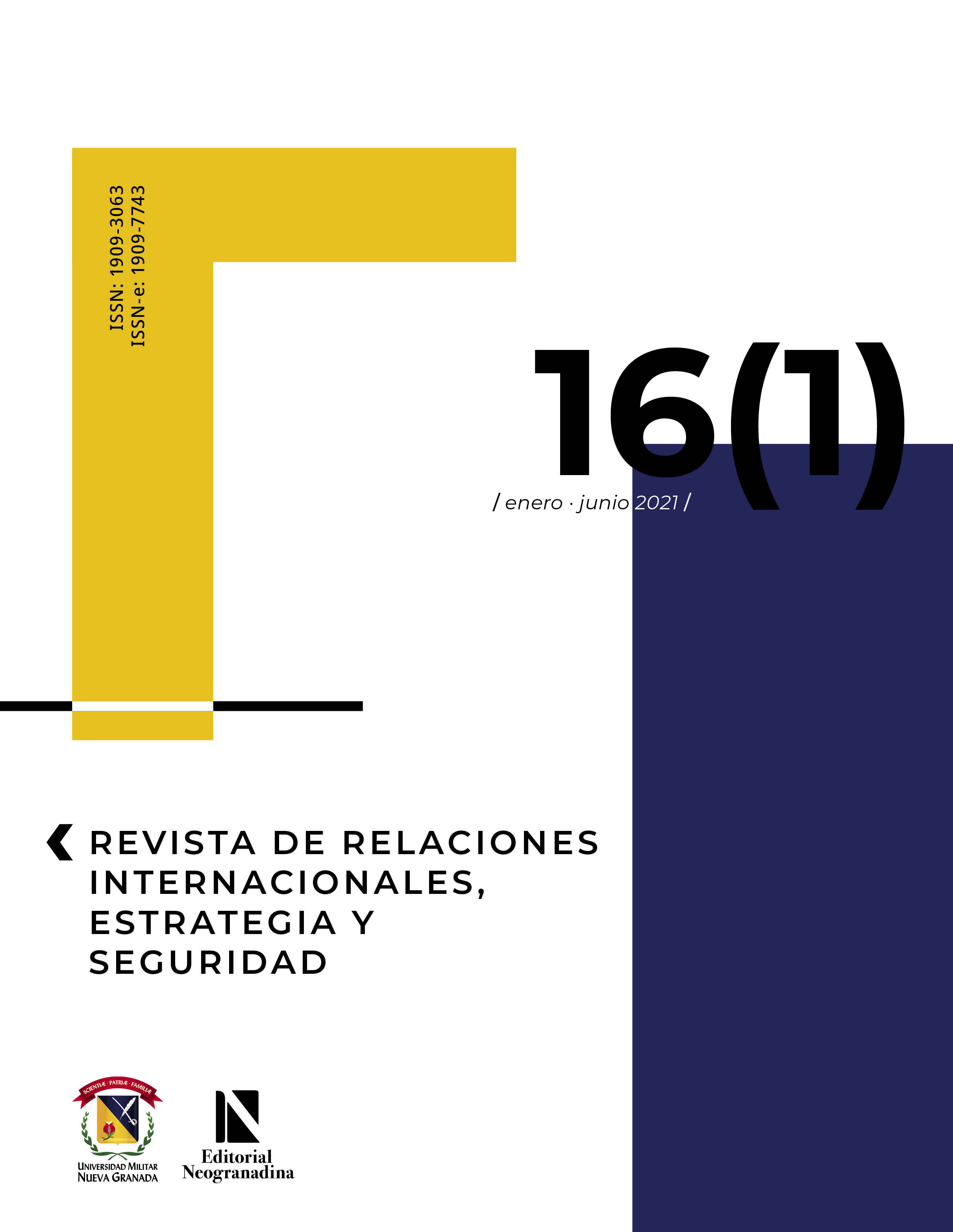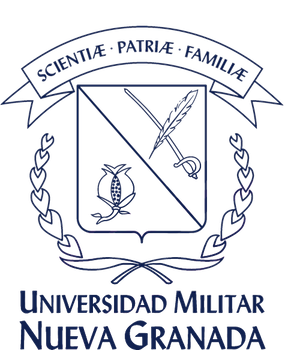Dangers of air operation in Antarctica to manage operational safety of the Colombian Air Force
Abstract
Air activity in Antarctica is considered risky, due to low ambient temperatures and topographical conditions. The Colombian Air Force (FAC)has been operating in the Antarctic territory since 2015 and is projecting its increase in the near future. Therefore, the objective of this article was to identify the dangers of air operation in Antarctica to manage the operational safety of FAC. To this purpose, a non-experimental mixed cross-sectional study was conducted during FAC'S Antarctic mission in the austral summer 2019-2020, and the operational risk landscape methodology in force in FAC was used. The risk landscape obtained showed at the exit of the runway, freezing and human factors such as the riskiest for the operation, a situation that coincides with what was reported in the literatu- re. With the information collected, a tool was developed to mitigate the operational risk of FAC in polar missions. Finally, for the risk management of FAC'S air operations in Antarctica, it was concluded that the fundamental core lies in the ongoing training of personnel involved in polar operations, which are among the most at risk within air activity. In addition, it is recommended to update or review the risk landscape at least once every six months, in order to research the latest weather trends prevalent on the white continent, such as global warming and changing weather that could lead to phenomena that have not been identified in this study.
Downloads
References
Administración Nacional de Aviación Civil Argentina (anac). (1995). Control de peso y balanceo en las aeronaves. https://www.anac.gov.ar/anac/web/uploads/normativa/circ_as/ca-120-27b.pdf
Aerocivil. (2010). Manual guía del plan operativo o plan de operaciones aeroportuaria. https://www.aerocivil.gov.co/normatividad/CIRCULARES%20AGA/CI%20027%20-%20V3.pdf
Amézcua, O. (2010). Factores humanos en aviación. https://es.calameo.com/read/005827693ac9266982f43
Asociación Internacional de Transporte Aéreo (iata, por sus siglas en inglés). (2019). Informe de seguridad de iata. https://www.iata.org/contentassets/928a418fcf4c420fa62e198df1d39335/2019-02-21-01-sp.pdf
Cao, Y., Tan, W. y Wu, Z. (2018). Aircraft Icing: An ongoing threat to aviation safety. Aerospace Science and Technology, 75, 353-385. https://doi.org/10.1016/j.ast.2017.12.028
Cardona, O. (1993). Evaluación de la amenaza, la vulnerabilidad y el riesgo: elementos para el Ordenamiento y la Planeación del Desarrollo.En Maskrey A. (Compilador), Los Desastres No son Naturales (pp. 51-74). La RED/Tercer Mundo Editores.
Chávez, S. (2018). El concepto de riesgo. Recursos Naturales y Sociedad, 4(1) 32-52. 10.18846 renaysoc.2018.04.04.01.0003.
Comando Fuerza Aérea Colombiana. (2015). Manual de técnicas y procedimientos para vuelos a territorio antártico en el equipo C-130H.
Comisión Colombiana del Oceano. (18 de febrero de 2015). http://www.cco.gov.co/cco/nosotros/la-comision.html
Comité Técnico Nacional de Asuntos Antárticos (ctn-aa). (2015). Programa Antártico Colombiano. https://cecoldodigital.dimar.mil.co/66/
Consejo de Administradores de Programas Nacionales Antárticos (Comnap, por sus siglas en inglés). (2018). Antarctic Flight Information Manual. https://atslib.omeka.net/items/show/9122
Echemendía, B. (2011). Definiciones acerca del riesgo y sus implicaciones. Rev Cubana Hig Epidemiol, 49(3), 470-481. http://scielo.sld.cu/pdf/hie/v49n3/hie14311.pdf
European General Aviation Safety Team (egast). (2018). Formación de hielo en motores en pistón. https://www.easa.europa.eu/sites/default/files/dfu/GA05-Formación%20de%20hielo%20en%20motores%20de%20pistón-Final_AESA.pdf
Flight Safety Foundation. (2016). Norma Básica de Riesgos en Aviación: Operaciones de las Aeronaves Contratadas. https://flightsafety.org/wp-content/uploads/2017/04/FSF-Spanish-BAR-Standard-v6_WEB_spreads.pdf
Fuerza Aérea Colombiana (fac). (2010). Manual de gestión de seguridad operacional para la Fuerza Aérea Colombiana, Manual fac 3-007. (1era ed.) Imprenta y publicaciones Militares.
https://doi.org/10.18667/cienciaypoderaereo.85
Fultz, A. y Ashley , W. (2016). Fatal weather-related general aviation accidents in the United States. Physical Geography, 37(5), 291-312. https://doi.org/10.1080/02723646.2016.1211854
Fundación Marambio. (2019). Protocolo al Tratado Antártico
sobre la protección del Medio Ambiente. http://www.marambio.aq/protocolomedioambiente.html
Hedblom, E. E. (1965). Polar manual: Arctic and antarctic living conditions, personnel selection, hygiene and sanitation, clothing, nutrition, supplies, and equipment, ... injuries, first aid, safety, and survival.. Dept. of Cold Weather Medicine, u.s. Naval Medical School, National Naval Medical Center.
Hernández, R., Fernández, C. y Baptista P. (2014). Metodología de la Investigación. (6a ed.) Mc Graw Hill Education.
Maurino, D., Reason, J., Johnston, N. y Lee, R. (1995). Beyond Aviation Human Factors: Safety In High Technology Systems. Routledge. https://doi.org/10.4324/9781315261652
Mon, R. (2016). Psicología y factores humanos de la aviación [Trabajo de grado, Universidad Autónoma de Barcelona (uab)]. https://ddd.uab.cat/pub/tfg/2016/169886/MonLecinaRoberto-TFGAa2015-16.pdf
Olalla, E. y Herraiz, E. (2013). Evaluación de riesgos de seguridad operacional: el punto de vista del regulador. https://studylib.es/doc/4797818/evaluación-de-riesgos-de-seguridad-operacional
Organización Internacional de Normalización (iso). (2015). iso 9001:2015. Sistemas de gestión de la calidad - Requisitos. http://www.cucsur.udg.mx/sites/default/files/iso_9001_2015_esp_rev.pdf
Organización de Aviación Civil Internacional (oaci). (2018). Peligros y Riesgos. https://www.icao.int/SAM/Documents/2018-SSP7/Peligros%20y%20Riesgos%20[Read-Only].pdf
Organización de Aviación Civil Internacional. (2018). DOC 9859. Manual de gestión de la seguridad operacional. https://portal.mtc.gob.pe/transportes/aeronautica_civil/sistema_gestion/documentos/SMS/9859_cons_es.pdf
Organización de Aviación Civil Internacional. (oaci). (2019). Conceptos básicos de Gestión de la Seguridad Operacional. https://www.icao.int/NACC/Documents/Meetings/2019/SMSANSP/SMSxANSP-P01-SP.pdf
Perales, P. (2010). La gestión del riesgo operativo. Revista de Aeronáutica y Astronaútica, (799), 1050-1057. https://publicaciones.defensa.gob.es/media/downloadable/files/links/R/E/REVISTAS_PDF2044.pdf
Piñero, F. (2017). Metodología para valoración de riesgo operacional en aerolíneas: inclusión del costo potencial de eventoso peligros. Universidad Nacional de Colombia.
Rivera, A., Casassa, G., Thomas, R., Rignot, E., Zamora, R., Antuñez, D., Acuña, C. y Ordenes, F. (2005). Glacier wastage on southern Adelaide Island, Antarctica, and its. Annals of Glaciology, 41, 57- 62.
https://doi.org/10.3189/172756405781813401
Ryan, K. (2014). Fatigue Mitigation And Crew Endurance Management In The Royal Australian Navy And The U.S. Navy: A Review Of Recent Efforts And A Collaborative Path Forward [Tesis de maestría]. http://hdl.handle.net/10945/44656
Unidad Administrativa Especial de Aeronáutica Civil. (2016). Reglamentos aeronauticos de Colombia.












